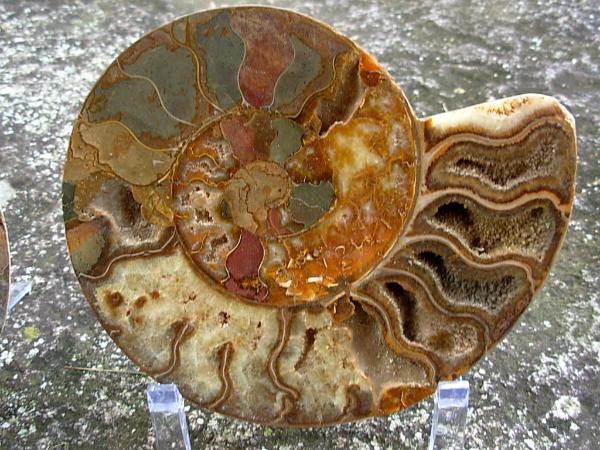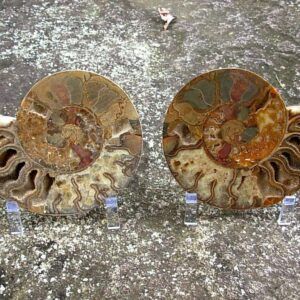Ammonites
Ammonites lived during the Jurassic period (which began about 201 million years ago) all the way till the end of the Cretaceous period (which ended about 66 million years ago). The species had a window of about 140 million years during which Ammonites were present on earth. The ammonites became extinct at the end of the Cretaceous period. This is about the same time the dinosaurs disappeared. We have learned a lot about Ammonites through the fossils that were formed when the remains of the animal became buried by sediments that later became mineralized and solidified into rock or pyrite.
The shape of the Ammonite is very distinctive. It normally formed in a spiral coiled shape becoming larger increasing the chamber areas as it grew. The actual animal lived in the largest part of the shell and it had a thin living tube called a siphuncle passed through the dividing chamber walls (which are called septa), extending from the ammonite's body into the empty shell chambers. This shell was actually used as a ballast control tool for these animals. They could allow water in the chambers to go down in the water or let out the water for them to become lighter and more buoyant and rise in the water. (Much like the process used by modern submarines)


